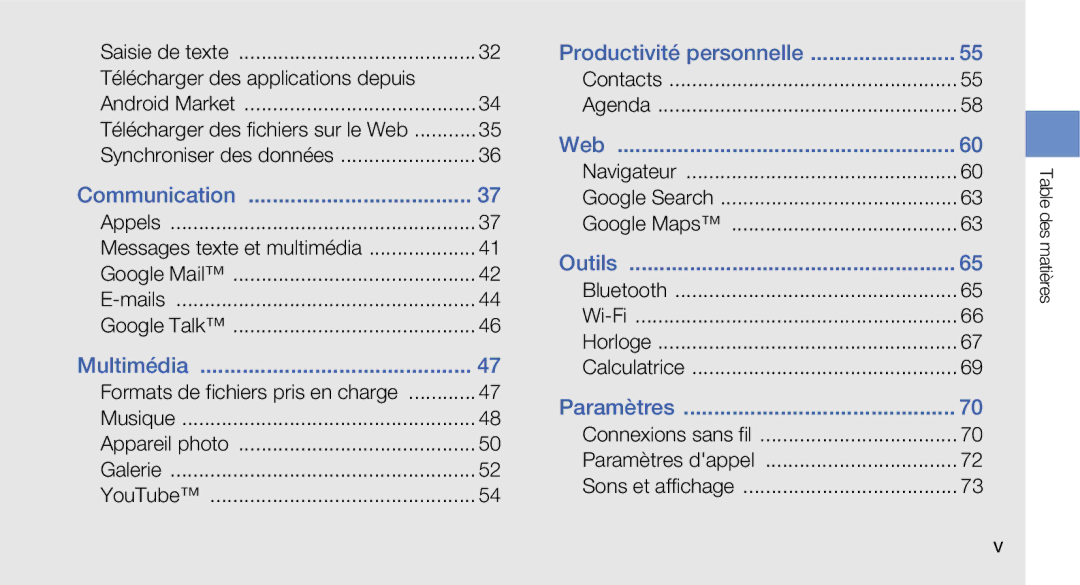GT-I7500OKASFR, GT-I7500OKABOG, GT-I7500OKAXEF, GT-I7500TSASFR specifications
The Samsung GT-I7500 series, which includes models like GT-I7500TSASFR, GT-I7500OKAFOP, GT-I7500OKAOMX, GT-I7500OKACOS, and GT-I7500WSAVIA, paved the way for smartphones that combined cutting-edge technology with user-centric features. Introduced in 2009, the GT-I7500 marked Samsung's entry into the burgeoning Android smartphone market, and these models showcased its commitment to innovation.One of the primary features of the GT-I7500 series is its massive 3.2-inch AMOLED touchscreen display, which provided vibrant colors and impressive clarity for its time. This enhanced user interaction with the Android operating system, allowing for smooth navigation and an engaging multimedia experience. The resolution of 480 x 800 pixels ensured that images and text were sharp, enabling users to enjoy a wide range of applications and games.
Powered by a 528 MHz Qualcomm Snapdragon processor, the GT-I7500 series offered decent performance. While it may not compare to modern smartphones, it was competitive during its release, capable of handling basic applications and multitasking without significant lag. The device ran on Android 1.5 (Cupcake), providing users with access to a variety of apps through the Android Market, which later evolved into the Google Play Store.
The camera system was another standout feature, with a 5-megapixel rear camera equipped with autofocus and LED flash. This enabled users to capture high-quality photos, a notable asset at the time. Video recording capabilities added further versatility for photography enthusiasts.
In terms of storage, the GT-I7500 series supported microSD expansion, allowing users to increase their storage capacity beyond the internal memory options. This adaptability made it easier for users to store media files, apps, and important documents.
Connectivity options included Wi-Fi, Bluetooth, and 3G capabilities. These features ensured that users could stay connected to the internet and share files easily, enhancing the overall user experience.
With a sleek and minimalist design, the GT-I7500 models were not only functional but also stylish. The durable build quality reflected Samsung's focus on producing reliable devices. In summary, the Samsung GT-I7500 series represents a significant chapter in the evolution of smartphones, showcasing impressive features, solid performance, and a user-friendly experience, laying the groundwork for future innovations in mobile technology.

